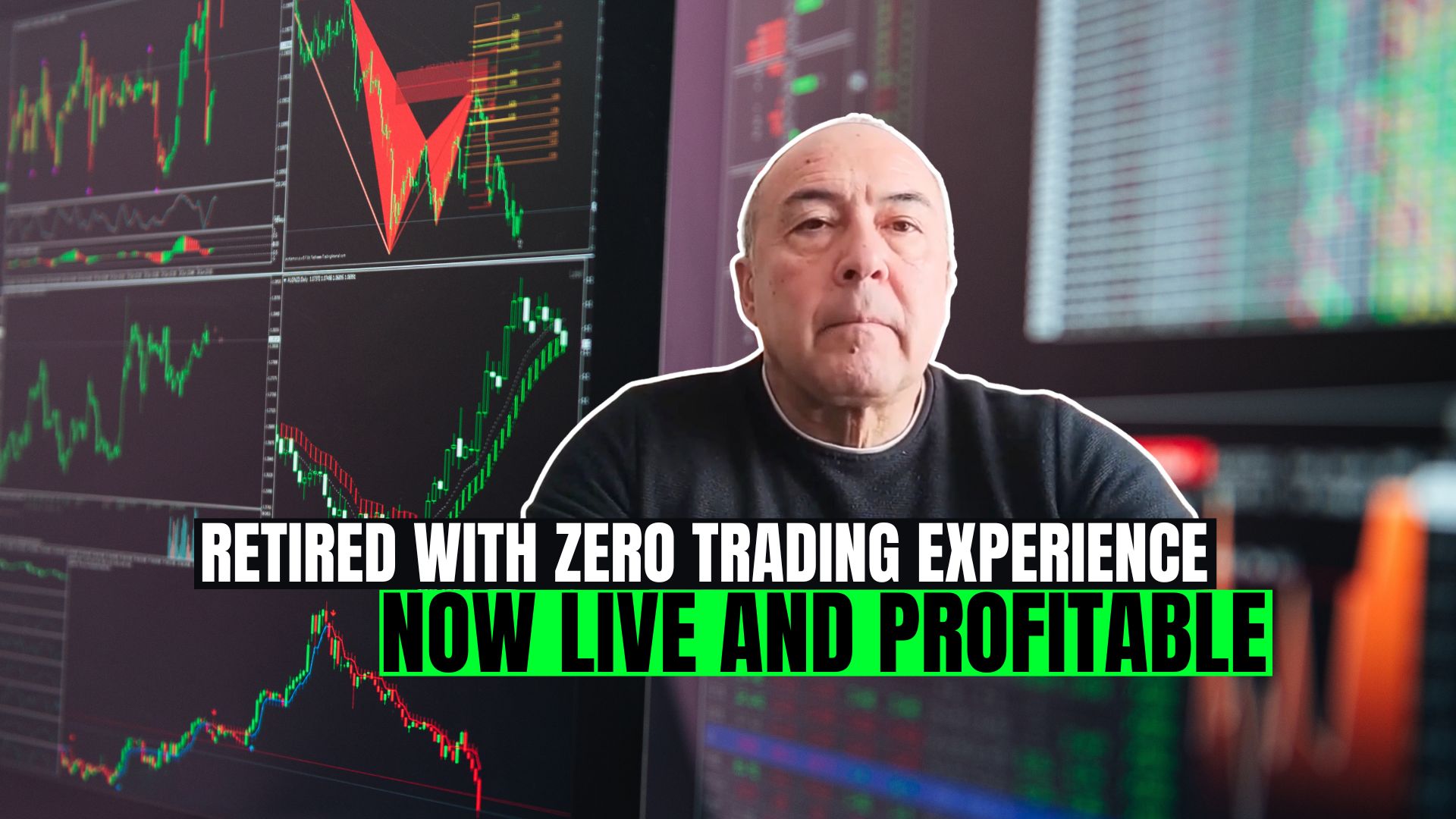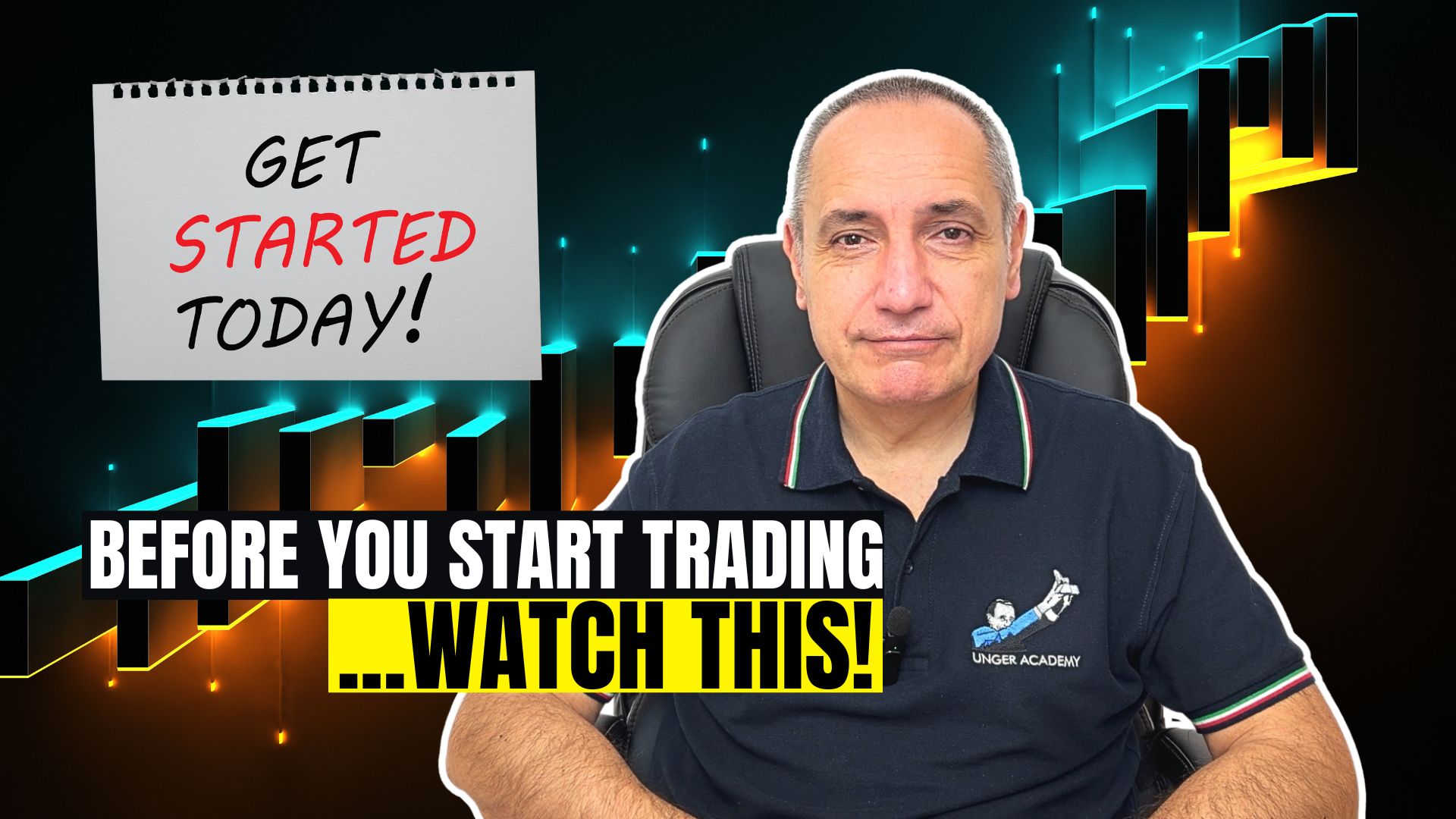Introduction
Hello and welcome. Today, I want to ask you a blunt question: Is it worth trading when interest rates are high?
In this video, we will try to shed some objective light on the topic by considering all the essential points.
One of the coaches at Unger Academy here.
Interest Rates and Bond Investing
Let’s get started. We all know that with the rise in interest rates in recent years, investing in bonds and government securities has become increasingly attractive.
Let’s look at the chart of the US 30-year bonds, which shows the 30-year yields. We can see that there’s been a significant rise recently.
Interest rates have reached levels that have not been seen in years.
The 30-year bond has hit the 5% mark, but I assure you the same is true for the Eurozone.
Since these are bonds guaranteed by governments or by large companies in the case of corporate bonds, investor confidence is higher because the risk of default is seen as virtually zero.
But here’s the first point to look out for: Is there indeed no risk?
Risks Associated with Bond Investments
In reality, investments in bonds carry as much risk as any other type of investment.
Mind you, I’m not talking about the more “remote” risks such as the bankruptcy of a government, which is maybe possible but certainly the chances are very low.
I’m talking about some more specific risks that not everyone considers.
More in particular, I’m talking about the fact that when we buy a product like a bond, we are tying our capital to those interest rates.
So, what happens to our investment if interest rates rise immediately after we buy the bonds?
Well, we remain tied exactly to our 4-5% and thus miss the opportunity for new, more favorable interest rates.
Also, if we abandon the investment we have just made, we might even have to accept a considerable loss.
And this constraint can even last for many years, ten or twenty years in the case of bonds and government securities.
And the risk exists even if interest rates fall drastically.
Let’s assume that we have invested part of our capital in bonds and that interest rates start falling.
Undoubtedly, the investment we made will pay off because we will stay at very high-interest rates over time.
But even then, sooner or later, there will be disadvantages because when interest rates fall, it becomes much less favorable to open new positions in bonds.
So, we will have to look for other investment opportunities at that point.
The Role of Diversification
What can you do then? Diversification is the first thing you should never forget when investing.
If I decide to invest in general, I can not just focus on one product or financial asset.
However, you have to add, of course, that while diversification helps to manage risk better, you also need good alternatives, of course.
And here it is precisely trading. Trading certainly exposes the investor to higher risks, although the returns are generally commensurate with the risks.
But this activity is missing the fundamental aspect that we just mentioned. In trading, the money doesn’t stay frozen for years but only for the positions we open.
It’s true that there’s a margin required to open a position when using financial instruments such as futures to avoid possible defaults, but the liquidity always remains 100% in our account.
This means that we can always access our account and withdraw what we need.
And this means that we always have 100% control over the liquidity in our account, and if necessary, we can close the open positions to withdraw the capital.
Not only that but with futures, we can also invest in many different markets.
We will be able to distribute the risk on commodities as well as on stock indexes or, obviously, also on bonds and, to a minimal extent, even on cryptocurrencies.
So, to return to the subject of diversification, if we were to invest all of our savings in bonds out of the blue and, for some reason, something goes wrong, we would risk ending up with losing everything on a single investment.
On the other hand, if we spread the capital across many markets and financial instruments, even though some trades may go wrong, we can compensate for it with others that go right.
So diversification benefits us.
Comparing Returns: Bonds vs. Trading
But then we come to a second important aspect: if it’s true, let’s assume that an investment in government bonds today can yield average annual returns of up to 5%, then it is also true that a good systematic trader can aim for an average return of 15-20% when working with a moderate risk profile.
Indeed, some traders earn more, even among our students, but for long-term success, it is essential to have realistic expectations. And a return of 15-20% is more realistic.
To understand the second aspect, let’s assume that we are in the scenario just described, that is, on the one hand, we have 5% guaranteed bond returns and, on the other hand, 15-20% through trading.
The difference between the returns should be 10-15%, right? That means I give up 5% of the bonds to invest the capital elsewhere with a 15-20% return.
So I earn 10-15% more, that’s the difference, right?
Well, I am already telling you that’s NOT the case because the difference is much more significant.
How is that possible? Well, we just said that I always have 100% liquidity in my trading account when I trade.
This liquidity remains active because it is not directly used to buy and sell something, as in the case of bonds.
With futures, you are working with margin. So when I buy a futures contract, I do not give up any of my liquidity, but I have some liquidity frozen to ensure I am not insolvent in the market.
But this liquidity remains with me anyway. It’s frozen, yes, but it’s still active in my account, and this means that I can bring it into the annuity.
And that’s precisely what happen with the trading accounts. The liquidity in the account yields a positive return, which, of course, depends on the current interest rates.
So, we are dealing with a trading account that gives us a return just because we own it.
Yields that are not as high as the benchmark, let us call it, so government bonds or interbank interest rates.
It will be lower and taxed differently from government bonds, but it will still generate a return for us, which will be our initial return.
So we no longer have to say, "I am giving up the 5% bond completely because I need the liquidity to trade." Still, that liquidity will be partly recovered through the interest that will only accrue through the liquidity in the account.
It’s like you are simultaneously using the money for two purposes: Trading and passive return.
Final thoughts
So, let us summarize what we have said.
Investing in bonds is the right thing to do right now, but it does not have to be the only thing.
By placing it side-by-side with another type of investing, such as futures trading, we can increase diversification without missing out too much of the interest we could earn by buying bonds or government securities when we tie up our money.
If you are interested in the operational side of futures trading, I invite you to book a free, no-obligation strategy session with our tutors.
Below the video is a link directing you to some resources.
As well as booking a call with one of our tutors, you can also participate in a free masterclass led by Andrea Unger.
Thank you so much for following me here.
We look forward to the following video with more trading and investment tips and insights.
Goodbye and I’ll see you next time.







